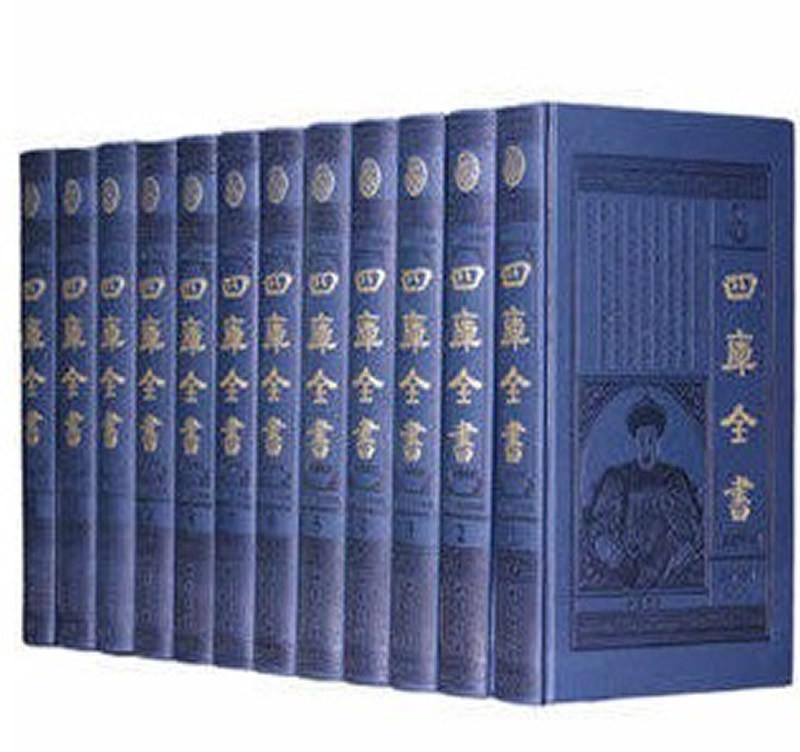As we all know, the "Four Libraries of the Whole Book" is a magnificent masterpiece, rich in content and all-encompassing, and almost all disciplines such as Chinese literature, history, philosophy, science, engineering, medicine, etc. can find its source and bloodline. Almost all the emerging disciplines in China can also find the soil and nutrients for its survival and development from here, which is worthy of being a summary of the ancient Chinese intellectual and cultural heritage.

What is the scale of this? It would take another 70 years if one had been reading the Siku Quanshu for the rest of the time except for sleeping and eating. Therefore, since the completion of the "Four Libraries", almost no one has been able to read it completely from beginning to end.
In the 38th year of Qianlong (1773), Qianlong ordered the opening of the museum to repair the "Four Libraries", and all of them were completed by the 58th year of Qianlong (1793).
The whole book is compiled according to the traditional four-part method of classics, histories, sub-sections, and collections, and each part is divided into several categories, and the lower lines are different as genera. In addition to the Chinese classics, the book also contains some writings on missionaries from neighboring countries such as Japan, Korea, Vietnam, and others who came to China during the Ming and Qing dynasties. A total of 7 copies of the book are transcribed, which are hidden in the Wenyuan Pavilion of the Inner Court of Beijing, the Wenyuan Pavilion of the Yuanmingyuan on the outskirts of Beijing, the Wenshu Garden of the Fengtian Forbidden City, and the Wenjin Pavilion of the Chengde Mountain Resort, collectively known as the North Fourth Pavilion. In The Wenzong Pavilion, Wenhui Pavilion and Wenlan Pavilion in jiangsu and Zhejiang provinces each stored one copy.
The "Siku Quanshu" totaled 800 million words, because at that time, engraving and printing, there were not so many wooden boards that could only be copied. Qianlong specifically looked for the font Juanxiu to copy, and stipulated that each person copied 1,000 words per day, and the font was neat and beautiful. Each person earns 2.5 silver per day. Seven copies of the 800-million-word Siku book were copied. 5.6 billion words cost 1.4 million taels of silver, equivalent to 280 million yuan. The state, like the individual, is the economic base that determines the superstructure. No money is a no-brainer.
So what is the truth behind Qianlong's "Four Libraries of the Whole Book"?
In fact, the process of compiling the Siku Quanshu is also the process of Daxing Character Prison. There were as many as 130 cases of literary prisons during the Qianlong period, and even Xu Shukui, a Zhejiang scholar who had been dead for many years, did not let go, took out the collection of poems before his death and took out a word-by-word buckle, and after many days of "hard work", he finally found a sentence of "Zhen Fei (wings) during the Ming Dynasty, and went to (to) Qingdu in one fell swoop", which originally meant that tomorrow morning I would flap my wings and leave this place in one fell swoop. There was nothing wrong with this poem, but the Qianlong Emperor deliberately misinterpreted that "the Ming Dynasty secretly pointed out the dynasty, and the great rebellion, as a result, even Xu Shukui's grandson was executed."
In addition, for political purposes, the Qianlong Emperor wanted to take this opportunity to conduct a comprehensive review of the books written by the authors of previous generations, to eliminate the idea of rebellion against the Qing Dynasty, and to cover up the truth of the destruction of books by compiling a series of books. Qianlong issued an edict ordering officials in various provinces to pay attention to illegal books and to search them severely.
Under the pressure of Qianlong, provincial officials sent their subordinates to search the homes of ordinary people, and for a time the entire dynasty fell into endless reporting and raiding, so a large number of "illegal" books were sent to Beijing every day and burned. Since the 39th year of Qianlong, the Forbidden City has erected a huge furnace to burn books day and night, and according to records, about 13,600 volumes of books were burned in the Qianlong Dynasty, with a total of 150,000 books burned, and more than 170 kinds of plates and more than 80,000 pieces of destroyed plates, which is equivalent to the books collected by the Siku Quanshu, that is to say, Qianlong repaired a "Siku Quanshu" and destroyed another "Siku Quanshu". Destroyed 20 million Ming dynasty court archives.
Even many of the ancient books included in the Siku Quanshu have been tampered with, and even some texts involving Khitans, Jurchens, and Mongolians have been modified and lost their original appearance.
Disclaimer: The image originates from the Internet, if there is infringement, please contact to delete!
Original works, piracy must be investigated, reproduction is prohibited!